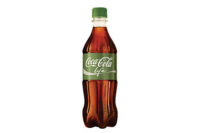Beverage formulations to alleviate generational health concerns
Defining the preferences of boomers, Xers and millennials

Baby boomers are drawn to omega fatty acids for their heart-, cognitive- and joint-health benefits, according to experts. (Image courtesy of Drink Chia LLC)

Millennials have been quicker to embrace new botanical ingredients like ashwagandha, which is found in Yogi Sweet Tangerine Positive Energy tea. (Image courtesy of Yogi Tea)


In The Who’s 1965 rock song “My Generation,” the group sang about how older generations did not seem to understand its generation. Today, beverage research and development (R&D) experts are trying to change this notion by better understanding generational demographics for baby boomers, Generation Xers and millennials (also known as Generation Y) and formulating products that fit their nutritional and lifestyle needs.
Baby boomers, born between 1946 and 1964, make up about one-quarter of the U.S. population, according to the U.S. Census Bureau, but their reach extends beyond borders, according to Patrick Morris of Fortitech Inc. “This is the largest consumer demographic group in the world, not just in the United States,” says the communications manager for the Schenectady, N.Y.-based company. This generation’s sheer size means that products for this group have huge market potential right now and in the considerable future, he adds.
As a group, this generation tends to be “a savvy population of people looking for materials,” says Russ Hazen, raw materials and innovations specialist at Fortitech. “They ask questions, and they want to see the science behind the ingredients.”
More specifically, baby boomers also are looking for ingredients and formulations that address their specific health concerns, including mental sharpness and joint health, experts note.
For example, seniors might benefit from products that contain the carotenoids lutein and beta-carotene as well as omega-3 long-chain polyunsaturated fatty acids, which have been linked to verbal fluency, improvements in general cognition and verbal memory, and lower rates of cognitive disorders, respectively, according to DSM Nutritional Products Inc., Parsippany, N.J. In line with this, the company offers its Quali-Carotene carotenoid nutrient and Ropufa/life’sDHA omega-3 nutritional lipid for formulation.
To create products with joint health benefits, DSM recommends including joint health vitamins such as vitamin C for building cartilage, vitamin E to help reduce joint discomfort, and vitamins B6 and D to help prevent joint conditions, such as osteoarthritis and rheumatoid arthritis. For these functions, DSM offers branded vitamins C, D, E and B6 within its Quali portfolio. Omega-3 long-chain polyunsaturated fatty acids, primarily docosahexaenoic acid (DHA) and eicosapentaenoic acid (EPA), also can help reduce joint pain intensity, duration of morning stiffness, the number of painful and tender joints, and use of joint medication, the company says.
Fortitech’s Morris also notes that baby boomers are interested in products that contain omega-3 fatty acids because of their associated heart-health benefits.
Overall, maintaining the ability to continue with normal activities as an individual ages as well as retaining mental sharpness as he or she ages are the top two health concerns among all shoppers, says Caroline Brons, senior marketing manager for DSM, citing data from St. Petersburg, Fla.-based HealthFocus International’s May 2013 report, “The 2013 HealthFocus Trend Report: A National Study of Public Attitude and Actions Towards Shopping and Eating.”
Fortitech’s Morris agrees that the baby boomer generation is facing aging head-on in order to remain active in the future. “[Baby boomers] have embraced the concept of ‘healthy aging,’” he says. Along these lines, this generation currently is interested in ingredients such as resveratrol, grape seed extract, collagen and curcumin, which offer anti-aging properties, he adds. On the other side of the spectrum, the millennial generation, which includes consumers born between 1980 and 1999, is “a little bit more daring” when it comes to trying new ingredients, Fortitech’s Hazen says. For example, millennials are quicker to embrace ingredients like ashwagandha and bacopa botanicals, olive polyphenols and acerola fruit, he notes.
However, sometimes the addition of botanicals, vitamins, minerals, amino acids, omega-3s, pre-biotics, probiotics and other functional ingredients can affect the flavor of the beverage, says Sam Wright IV, chief executive officer of The Wright Group, Crowley, La. “Very often these ingredients do not taste good and have other chemical properties that threaten stability, solubility, mouthfeel and other properties,” he says. The Wright Group offers SuperCoat microencapsulated ingredients and ingredient systems to help overcome these technical challenges by enhancing stability and making such ingredients tasteless in formulations, he says.
In addition to being adventurous, this demographic tends to be more health-conscious than previous generations, Fortitech’s Hazen says. Many millennials are drawn to fruit-juice-based products because of the health halo that surrounds them, which resonates with their healthy lifestyles, he says. From an R&D perspective, juice is a great vehicle for fortification, and many beverage-makers are choosing to fortify these beverages with nutrient boosts and emphasizing the high-antioxidant materials in these beverages, including ingredients like maqui berry, pomegranate and acai, he explains.
Among the top health concerns of millennials are stress and lack of energy, DSM’s Brons says, citing HealthFocus data. In fact, there is a strong consumer interest in products that contribute to mental energy and improve motivation, such as non-alcohol energy drinks and other products aimed to help office workers beat the afternoon lull and power through the rest of the day, according to DSM. To provide some of these benefits, the company suggests fortifying with glucose and B vitamins for energy; polyunsaturated fatty acids and ginseng for mood benefits; and caffeine, taurine and ginkgo biloba for alertness.
Consumers are increasingly turning toward amino acids as sources of energy as well, says Shanna Smidt, business development manager for Glanbia Nutritionals, Fitchburg, Wis. To mix these ingredients into both powdered beverage mixes and ready-to-drink (RTD) products, the company offers PepForm technology to increase the solubility of bioactives in the beverages. Specifically, its PepForm Fatigue Fighter fortification ingredient contains multiple amino acids in peptide form to decrease serotonin production and provide energy, Smidt says.
Along these energy lines, millennials tend to be the core consumer group of sports, protein and energy drinks, Fortitech’s Hazen says. However, these applications can be adapted for older consumers as well, he says. For example, the addition of joint health ingredients to these types of beverages could help beverage-makers target older consumers seeking recovery benefits post-activity, he notes. Although Hazen says he has already seen some instances of this type of fortification in sports and energy beverages, he notes that there has been some lag time in incorporating ingredients that typically belong in supplements into beverages because of the regulatory approvals that need to be made to allow the ingredients into beverages.
In addition, some functional formulations and ingredients appeal to the health concerns of multiple generations of consumers. For example, 68 percent of baby boomers, 54 percent of Generation Xers, and 40 percent of millennials are concerned about high cholesterol, says Marlena Hidlay, marketing analyst for DSM, citing data from Escondido, Calif.-based Sloan Trends’ March 2013 report, “Circulation is a mass market opportunity.”
In line with this, DSM offers its recently acquired Oatwell oat bega-glucan product, which is suitable for smoothies, RTD beverages, and powdered mix applications and targeted toward heart-healthy individuals of all age groups, says John Bolinger, new business development manager for DSM. Oatwell has been scientifically proven in more than 50 clinical studies to offer cholesterol reduction, resulting in an approved U.S. Food and Drug Administration claim, Hidlay adds.
Looking for a reprint of this article?
From high-res PDFs to custom plaques, order your copy today!







